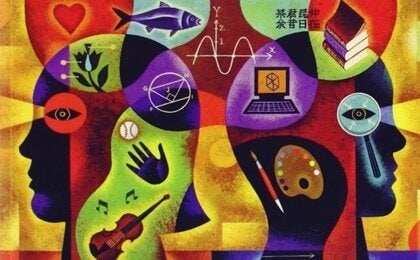Understanding the existence of multiple intelligences in the classroom is the first step in creating a more inclusive school, many educational models that we work with today tend to limit each student’s particular potential, showing that we need an alternative, more sensitive, diverse model. revolutionary.
The “multiple intelligence” model was formulated by Howard Gardner more than thirty years ago, despite this, we continue to highlight its innovative assumptions and inspiring nature when it comes to advancing in the field of education, we affirm it as an almost obvious fact: a large part of the education system continues to rely on traditional educational projects.
- We recognize that it is not always easy to respond to the diversity of a classroom when we have a large number of students per class for each teacher.
- Nor is it easy when the educational community is not supported by political and social organizations or families.
- Of the children themselves.
- However.
- There is one fact that is difficult to ignore.
Present and future society is immersed in constant change, our present is not only more complex, but also requires much more of ourselves, if the school is not in tune with the dynamics that are taking place in this exosystem that Bronfenbrenner has mentioned in his model, we will project in the world unsuspecting people, unable to develop effectively and promote real progress in the future.
“In the future, we will be able to individualize, customize education as much as we want. “Howard Gardner.
Gardner’s model is fundamentally based on a fundamental idea: there is not only one type of intelligence, each person has a wide variety of cognitive abilities that make it unique, that is to say that this theory has always been criticized, for example, articles such as the one published in Psychology Today remind us that the literature that underpins this theory continues to have flaws.
However, it is worth saying that Gardner himself has repeatedly stated that, without a theoretical model, multiple intelligences are a framework from which to consider teaching from a broader, richer and above all inclusive perspective.
It is a reference that can inspire students to enhance the potential of students, teach them to think differently, discover their skills and use them to their advantage.
However, teachers know that applying the multiple intelligence model in the classroom is not easy, it is necessary to review current educational models, committed teachers are needed, as well as adequate follow-up to analyze whether the program’s goals are being achieved, whether learning is meaningful, and whether each child is showing progressive and positive progress.
Let’s see what techniques can allow us to apply the theory of multiple intelligences in the classroom.
Active methodologies are ideal to promote the autonomy and participation of the student in the learning process, with which the child becomes more protagonist of his learning. It ceases to be a passive recipient of knowledge to become a generator of knowledge, integrating processes such as creativity, responsibility, group work, curiosity, etc.
At the same time, this type of methodology should always follow an appropriate formal program and evaluation plan.
Projects to work didactic units is another very suitable mechanism to promote multiple intelligences in the classroom, as well as being a resource that requires some creativity on the part of teachers.
As we have already said, when integrating a multiintelligence project into the classroom, the first step is to involve teachers, so it is essential that, as far as possible, education is individualized, so it is necessary that the teacher intuitively observes what type of task is best for each student.
Education based on this model will always try to value each cognitive domain, every process that integrates each of these intelligences.
Gardner, Feldman and Krechevsky (2000) state that in each activity that is worked in the classroom one or more intelligences can appear, so if we choose to meet blue whales as part of a project, we can value naturalistic intelligence through interpersonal relationships (working group), linguistic (reading material on the subject) and even musical (listening to the singing of whales).
However, Gardner claims that multiple intelligences evolve and appear throughout our life cycle, often even relying on factors related to maturity (such as bodily kinesthetic intelligence), all of which teachers must understand, consider, and consider.
In conclusion, one obvious thing is worth mentioning. This model certainly requires more resources, initiative and commitment from all social workers. Maximizing education, making it more inclusive and responsive to the needs of the future is certainly an important goal.
The schools of the future demand first and foremosy firm responsibilities and commitments.

